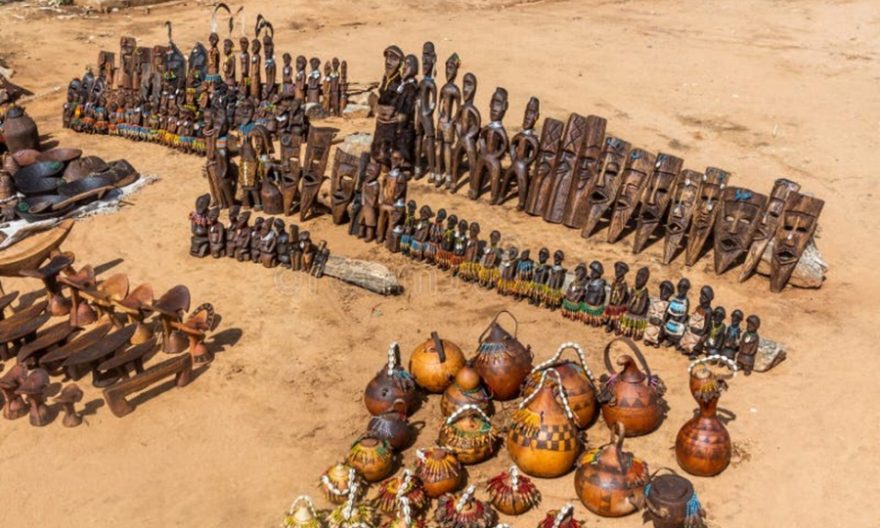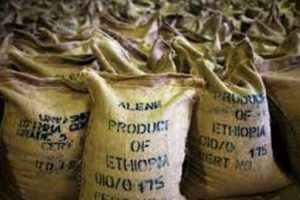
Of the multifarious sources of economic growth, artifacts, souvenirs and other related tangible and intangible assets do have dual advantages: economic growth and tourism promotion. In simple terms, a souvenir is a tangible object meant to remind people of a place they love and evoke positive feelings. It is important to understand that souvenirs have been around for centuries, with their origins traced back to ancient civilizations. Pilgrims traveling to religious sites in ancient times often brought back tokens or relics as souvenirs and they are immensely contributing to economic growth.
Cognizant of the fact that the directly or indirectly witnessed contribution of souvenirs to economic growth shall be cited by scholars, The Ethiopian Herald had a short stay with Alemayehu Ago, an agro-economist, to have some information about the significance of souvenirs apart from their advantage in introducing the countries cultures and societal values top the rest of the world.
He said, “With the surge in tourism that people recurrently observed today, it is not possible for everyone to bring such peculiar tokens home and with the passing of time; the genuine connection between travelers and their mementos has faced problems, but can be easily dealt with. Ethiopian souvenirs shouldn’t be mere decorative items; they should encapsulate deeper meaning and resonate with us personally.”
To address all the problems revolving around souvenirs he added, it’s crucial to reintroduce the significance behind each souvenir and raise awareness of the people. “Besides, the importance of reviving the stories and cultural heritage associated with the items we design has to be emphasized. By providing comprehensive explanations and narratives, we can restore the connection between the traveler and the souvenir as well as the economy they help generate. It becomes more than a trinket; it becomes a catalyst for remembering and reliving cherished memories thereby contributing a lot to economic growth,” he stated.
He further elucidated that imagine a scenario where every souvenir citizens, be they are local people or foreigners, purchase comes with a detailed account of its creation, the community that produced it, and the cultural significance it holds. Such information would offer a window into local traditions, craftsmanship, and the history of the destination visited. This aspect in turn would help promote tourism and the tourism to economic progress in turn. For instance, consider a small handcrafted armlet.
It carries the narrative of a local artisan who spent hours meticulously weaving it, using traditional techniques passed down to generations. This knowledge not only adds value to the souvenir but also fosters a profound connection with the culture and people of that particular destination. Besides, it can provide the economic sector a meaningful backing if carefully handled.
As to him, as souvenirs provide the nation with tourism change and economic progress, given the link between souvenirs and tourism shopping, souvenir is seen as a crucial component of the travel experience. Souvenirs refer to commercially tangible produced items that are purchased to remind visitors of their intangible travel experiences of destinations.
“For tourists, souvenirs can help locate, define, and freeze in time a fleeting, transitory experience, and bring back to an ordinary experience something of the quality of an extraordinary experience. The behavior of seeking souvenirs is usually perceived as a quest for authentic experiences. There is a close relationship between tourism and souvenirs, economic contribution and growth, too,” he opined.
Souvenirs, which mark memories of tourists’ travel experiences in time and place, are universal artifacts of tourism. However, the types of souvenir items that are offered to tourists vary, but the most popular ones include arts and crafts, gemstones, jewelry, leather goods, antiques, collectibles, postcards and local products such as food and clothing, carved following various modes and shapes reflecting the culture, norm and living styles of citizens.
He said as learnt from earliest scholars, souvenirs are categorized into five major categories: pictorial images, symbolic shorthand souvenirs, piece-of-the-rock merchandise, local products and place markers, whereas a new taxonomy of souvenirs has been developed and divided into four categories: tourist commodities, symbolic reminders, other commodities and other reminders.
He further stated that souvenirs play the role of commodities in trade among tourism providers and tourists. The significant commercial value of souvenirs, including gauging the suitability of a destination would be instrumental in enhancing local economic development, adding an invaluable input to the tourism portfolio and acting as a form of publicity.
In addition to their economic value, tourists are exposed to the culture and history of a location through souvenirs, which are also exploited as commodities in the commoditization of material culture. Hence, souvenirs are universally associated with tourism and contribute to sustainable tourism development greatly thereby making an immense contribution to the economy of the nation.
Despite the importance of souvenirs in tourism, they have not yet well developed as required in Ethiopia; he said adding that routine actions such as buying and selling souvenirs generate billions of Dollars annually. Due to its significant commercial value, the most popular topic in souvenir investigation is souvenir shopping.
As to Alemayehu, gift-giving behaviors vary in different cultures by examining various similarities and differences among cultures. Souvenir purchase motivations are also influenced by tourists’ personal habits. Truly speaking, Alemayehu said that the relationship between souvenirs and tourism geographies and asserted that souvenirs provide a fresh paradigm for thinking spatially about tourism and economic contribution at the end of the day.
In fact he added technology has been identified as one of the biggest impact factors on tourists’ behaviors and experiences. The meanings of virtual souvenirs for tourists, factors influencing tourists to purchase virtual souvenirs and tourist satisfaction with virtual souvenirs, has to be well pronounced so as to help the nation benefit out of the subsector as it deserves.
According to Alemayehu, from the perspective of evolutionary economics, economic growth comes from the origination, adoption and retention of novel ideas, and the arts plainly have a role in all three stages of the innovation process of economic evolution.
The economic relevance of tourism has been proven by numerous manifestations, indeed! Here, tourism is often regarded as an economic development path for structurally weak, peripheral areas, as a cure-all providing jobs and income, capital inflow and finally stopping out migration by creating a positive socioeconomic perspective for the future, he added.
He said it is going to be quite invaluable to first clarify what the economic consequences of tourism activities are, including what is being done regarding souvenirs. Since stakeholders tend to become confused by different concepts like economic contribution, impact or benefits, gross turnover, value added, or economic value.
The economic effects of tourism are often divided into tangible, quantitative or directly quantifiable in monetary values, and intangible, qualitative or not directly quantifiable effects, in fact! The positive tangible and intangible effects correspond to the benefits of tourism for societies and economies. Besides, economic benefits of tourism equal neither the economic impact of tourism nor the economic contribution of tourism which is coming out of a range of sectors and subsectors such as souvenirs’ shopping.
As to Alemayehu, the notion of economic benefits of tourism requires that a territorial entity or citizen has to be better off with tourism than without tourism. True, the economic contribution of tourism measures like what is being done regarding souvenirs do have immense contribution to the economic arena. Besides, he said the changes in the economic contribution have been resulting from specific events or activities comprising a range of tangible and intangible aspects, souvenirs can of course be categorized under the former.
According to Alemayehu, the economic contribution/impact of tourism refers to the actual expenditures of visitors. The economic effects of tourism occur and are measurable on different spatial scales, from the global, continental, national to the regional and local level. Furthermore, on the national level, the effects on the foreign exchange earnings are of great importance if the country is embarking on souvenir resources.
In sum, selling souvenirs has been frequently considered as a way for communities to benefit economically from tourism, especially in rural or poor areas. Locally-made souvenirs have the benefit of having low leakage, but imported souvenirs are often sold alongside locally-made souvenirs. The economic impacts of souvenir sales in peripheral areas, peculiarly, have made up a majority of souvenirs sold and have much greater outflow than local souvenirs, Alemayehu stated.
BY MENGESHA AMARE
The Ethiopian Herald March 22/2024


